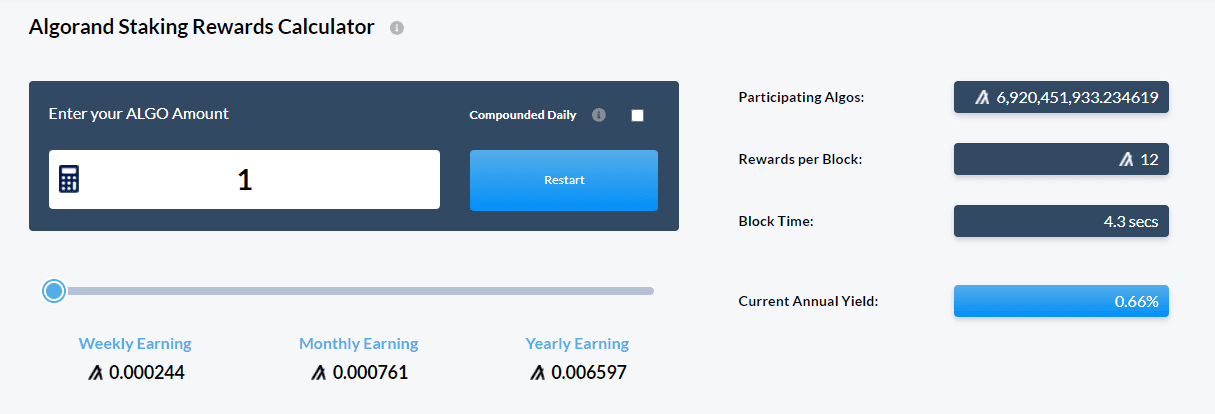
Key Takeaways:
- What is crypto staking and how can users benefit from owning crypto tokens?
- Proof-of-Stake mechanism reduces energy consumption and allows faster transactions.
- Several staking tokens promise high yields in 2022.
YEREVAN (CoinChapter.com) – Crypto staking has become a widely popular option among traders in 2021, and many proof-of-stake tokens rose to prominence. The trend could continue throughout 2022, which is why it is vital to introduce the leading staking tokens available on the crypto market. However, before rushing into the list, it is essential to understand what crypto staking is and how proof-of-stake consensus is different from proof-of-work.
What is crypto staking?
In traditional financial institutions, clients can get yields by owning a savings account. They lock a certain amount in the account and profit as it grows by approximately 2% annually (in developed countries). Typically, counties with higher risks, such as economic instability, or corruption, offer higher yields.
Also read: Treasury yields swell, equities, and crypto dip while markets factor in four rate hikes in 2022.
In the cryptocurrency sector, the same process is called staking. Users can lock a certain amount of coins in a wallet and earn yields. However, as cryptocurrencies typically feature high volatility, staking crypto introduces high risks, along with the possible high yields.
Proof-of-Stake consensus mechanism
The blockchain is a distributed ledger, where the ledger participants (nodes) have to verify each transaction.
For example, Bitcoin (BTC), the first and the largest cryptocurrency, uses a proof-of-work (PoW) consensus mechanism to verify those transactions. The verification happens through ‘computational effort.’ However, PoW features high energy consumption, which caused a wave of criticism in early 2021, with many traders looking into ‘greener’ solutions.
Enter Proof-of-Stake consensus mechanism. Not all the nodes are validators on these blockchains. Instead, the node has to stake a certain amount of tokens to validate a transaction. In return for exposing themselves to market volatility by partially locking their assets, validators earn rewards. As a result, the system drastically reduces power consumption and transaction time.
Also read: Joe Rogan-cryptocurrency industry could be the key to a decentralized future.
Here are five tokens promising for staking crypto in 2022.
#1 Cosmos (ATOM)
Cosmos (ATOM) is an interoperability blockchain designed to create an “internet of blockchains.” It is an ecosystem of blockchain apps and services that seamlessly interact. The project’s whitepaper was released in 2019, and Cosmos’ native token ATOM grew over 600% year-over-year.
Staking ATOM tokens will earn the validators 9.7% APY (annual percentage yield). Practically, for each 1,000 ATOM tokens they stake, the users can earn 89 more.

Also read: Cosmos may continue its Q1/2022 rally to $80 as ATOM explodes 60% in a week.
#2 Polkadot (DOT)
Polkadot (DOT) is also an interoperability blockchain. One of Ethereum’s co-founders, Gavin Wood, launched the Network in May 2020. Staking on Polkadot might be confusing for beginners, but its website describes it at length.
The Network features Nominators and Validators; thus, it uses a Nominated Proof-of-Stake consensus (NPoS). As a result, both Nominators and Validators lock their assets to receive rewards. In addition, however, the nominators get to “nominate validator candidates” they trust and earn DOT rewards.
The general rule for rewards across validator pools is that two validator pools get paid essentially the same amount of tokens for equal work, i.e. they are NOT paid proportional to the stakes in each pool. There is a probabilistic component to staking rewards in the form of ‘era points’ and ‘tips’ but these should average out over time.
explains the website.
Also read: Polkadot adds to growing fundamentals with Deutsche Telekom’s investment.
Polkadot’s APY stands at approximately 10%, minus the Validators’ commission rate.
#3 Terra (LUNA)
Terra (LUNA) is a stablecoin issuance protocol, and it features two main tokens: LUNA and UST stablecoin. Terra officially launched in 2019 but gained a lot of attention in 2021. It aims to replace complicated payments through credit card networks and banks with a blockchain alternative.
Terra’s way is making faster payments through stablecoins, pegged to different currencies. For example, due to growing adoption, the Network’s governance token LUNA gained a whopping 15,400% in 2021 and traded at $76.06 on Jan 19, 2022.
Also read: Selloff risks cloud Terra as LUNA rallies over 90% in just eight days.
Users can accomplish LUNA staking on Terra by obtaining a Terra Station wallet. For example, the APY could be 7.5% on average.

#4 Algorand (ALGO)
Algorand (ALGO) held its ICO in June 2019 and described itself as an autonomous, decentralized network. The protocol can handle 20 transactions per second (TPS) and counts over 21 million addresses in total. Unlike Polkadot, Algorand staking is relatively straightforward. In addition, the required minimum for staking is 1 ALGO. The APY stands at approximately 5-6%.

Also read: Algorand (ALGO) could pump 130% in Q1 2022 — here's why.
#5 Tezos (XTZ)
Tezos (XTZ) is an open-source platform that can evolve and upgrade itself.
Unlike other PoS protocols, any stakeholder can participate in the consensus process in Tezos and be rewarded by the protocol itself for contributing to the security and stability of the network. Additionally, PoS is less costly than other consensus mechanisms and lowers the barriers to entry for involvement.
clarified the website.
XTZ holders can stake their tokens on a wide range of platforms. Moreover, most of them allow a minimum of 1 XTZ, or less, to start staking. Rewards are subject to fluctuations, but holders can get APY between 4% and 8.5%, depending on the platform.
Also read: Ubisoft builds NFTs on Tezos; XTZ responds with a 37% surge.
The tokens presented above are a small part of possible choices for staking. Moreover, new PoS Networks emerge every month. Therefore, it is advisable to do your research before considering investing in any of them.


